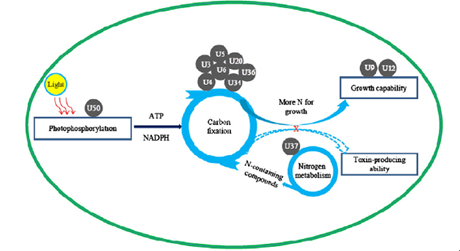Wang DZ, C Li, Y Zhang, YY Wang, ZP He, L Lin, HS Hong.Journal of Proteomics, 2012. 75: 5564-5577.
Alexandrium catenellais a widely spread dinoflagellate species which can produce potent neurotoxins and result in paralytic shellfish poisoning. To date, the molecular mechanisms regulating toxin biosynthesis remain unclear. This study compared protein profiles of a toxicity-lost mutant ofA. catenella, ACHK-NT and its wild-type, ACHK-T in the exponential phase, using two dimensional differential gel electrophoresis and MALDI-TOF–TOF mass spectrometry. Morphological analysis showed that both subcultures were morphologically identical with the distinctive taxonomic characteristics ofA. catenella. Sequence analyses of ITS1, 5.8S, ITS2 and 18S demonstrated that the mutant and wild subcultures were genetically identical for these markers. 90 differentially expressed protein spots were identified from ACHK-NT, of which 34 were down-regulated and 56 were up-regulated. Using a multilayered strategy for de novo protein sequence analysis, 67 proteins assigned to different functional categories were identified. Among them, 25 involved in bioluminescence, secondary metabolite biosynthesis, protein modification and toxin biosynthesis were down-regulated, while 42 participating in carbon fixation, stress response, transporter and protein folding were up-regulated. This study indicated that the strengthening of certain biological processes coupled with the depression of essential reactions upstream or downstream of the toxin biosynthetic pathway might have blocked toxin production and resulted in the loss of toxicity in the mutantA. catenella.

Fig. 7 Enhancement of certain biological processes related to the growth capability of ACHK-NT. Gray circles are up-regulated proteins in ACHK-NT. More nitrogen compounds and energy were utilized to support cell growth than toxin production in the mutantA. catenella.

